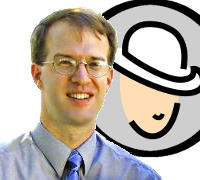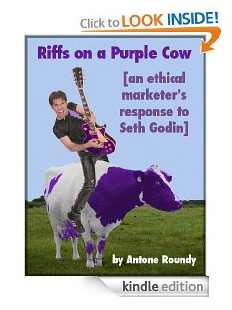Fill in the ______ in Your Marketing
by Antone Roundy | Add Your Comments | Mailing Lists, Marketing
What message do your website's visitors see immediately after they subscribe to your mailing list. "Please check your mail box for a confirmation email, and click the link"? Good, but incomplete.
What do they see in the confirmation email? A confirmation link? Good, but incomplete.
What do they see after they click the confirmation link? A download link for the freebie you bribed them with? Good, but incomplete.
What do customers see between the time they click "Buy" and when PayPal's page comes up? (And why does that take so long? PayPal? Anybody?) A message in their browser's status bar saying "waiting for PayPal.com"? Surely, you can do better.
What do your readers see when they get to the end of your eBook? "Thanks for reading," and your name? Is that all?
These are just a few examples of blank spaces (or under-utilized spaces) where you have a chance to inject a message.
It doesn't always have to be an overt marketing message -- a call to action. In fact, sometimes, it shouldn't be a call to action. Imagine what would happen if you showed an affiliate ad while people were waiting for PayPal to come up. If they clicked it and went somewhere else, you'd lose the sale.
But that doesn't mean you shouldn't use that time to say something more than "please wait."
Over at Neuromarketing, Roger Dooley wrote:
What do your customers hear if they have to wait for a representative? Elevator music? Recorded ads? Mindless statements telling the customer how important her call is? ... Instead of those common and boring solutions, try something a little different: building in "social proof" messaging might actually keep callers on the line and, when the call is answered, boost conversion rates.
A classic story from direct marketing (I ran across it most recently in Guy Kawasaki's Enchantment) is that of writer Colleen Szot's tweaking of an infomercial for exercise equipment. Szot changed the ubiquitous "Operators are waiting, please call now to "If operators are busy, please call again." This seemingly trivial change caused sales to skyrocket.
Two quick examples that I've used:
Subscription Confirmation Email
I recently added a download link for one of my eBooks in the confirmation email for my mailing list. Not the "thanks for confirming" email, but the "please confirm" email.
Not everyone confirms their subscription. Among them, some never even open the email. But some do, and just don't click the confirmation link. If I can get them to click a download link, I've got another chance to prove that I deliver value, and the thing they download can contain more marketing messages.
Between Clicking "Buy" and PayPal
When you click "Buy" on any of my sales pages, rather than going straight to PayPal, I send you to a page on my site that does a bunch of stuff related to my checkout system (in an instant -- nothing that slows the process down more than a few milliseconds) and then automatically forwards you to PayPal.
Since PayPal usually takes a lot longer than I'd like to load, I had to put something on the page to let customers know that they hadn't hit a dead end. At first, it was a simple "forwarding to payment processor" message.
Then I added things like my company logo, a "Verified By PayPal" badge, and an animated GIF "spinner" to keep the page from looking static.
And for some products (I haven't done this for all, though I should), you'll see a message that reinforces your purchase decision in some way or another.
None of these things distract from the task at hand. In fact, the goal of all of these is to reduce shopping cart abandonment -- to keep the customer moving in the direction they're already going.
Where in your marketing processes and products are you missing a chance to talk to your customers -- to make a personal connection, to build credibility, to make an offer, etc.?
As long as you're not distracting customers from the primary goal or cluttering a space that's better kept simple, filling in the blanks or adjusting the messages you're already sending is a great way to increase the impact of your marketing.




